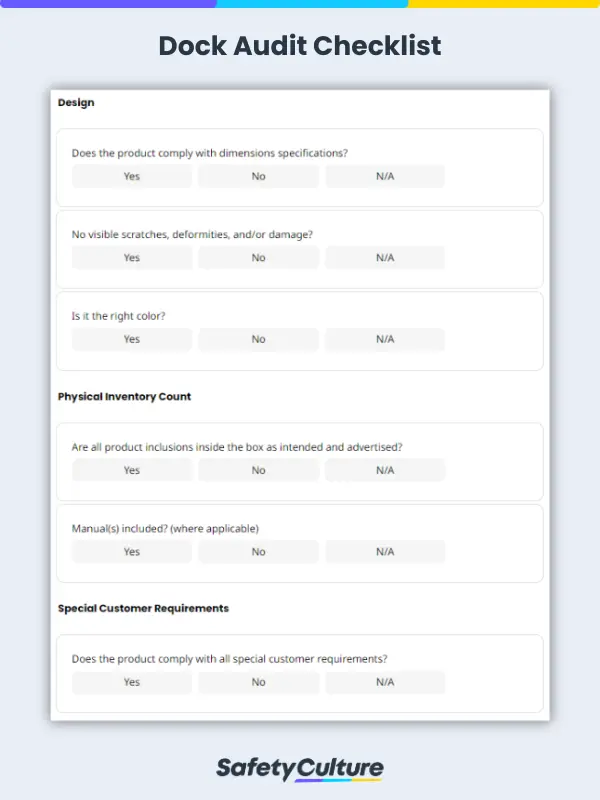What is a Dock Audit?
A dock audit is a quick, final inspection of finished products before they are sealed, boxed, and approved for shipping. It is a visual inspection typically performed by quality control inspectors on the shipping dock of a warehouse shortly before the product is loaded onto a freight truck for delivery.
Dock audits are primarily done to catch defective and non-compliant products before they are shipped. This helps the manufacturer avoid customer complaints, maintain a good business reputation, and encourage a culture of consistent, high-quality work. There is no regulating body that controls the frequency of dock audits and manufacturers can decide to perform them as often as they see fit.
Top 3 Things to Verify With a Dock Audit
Manufacturers should implement quality control measures during the production process in order to minimize product defects at the onset. The purpose of a dock audit is to ensure that the small percentage of non-compliant products missed by the initial QA are caught before they cause problems.
- Compliance with design
Does the product look as intended and advertised? Is it the right size, color, and shape? It is essential that a product complies with design specifications since customer satisfaction hinges on delivering a product as it was promised. Additionally, small derivations from the design can put customers at risk which can negatively impact businesses. - Physical Inventory Count
Are all the product inclusions accounted for as intended and advertised? One of the most frustrating things for a customer is receiving an incomplete product. Failure to identify such instances could cause manufacturers to lose a client’s business. - Compliance with special customer requirements
It’s easy to overlook special customer requests if your team is used to making products the standard way. Ensure that the product meets special customer requirements before giving the go-ahead for delivery to avoid client complaints or worse, legal disputes.



